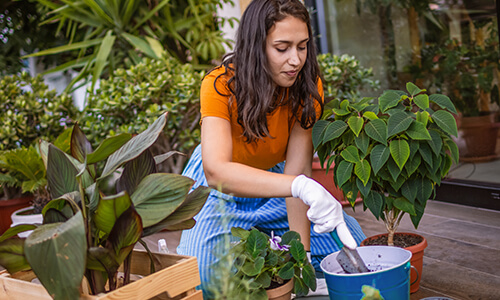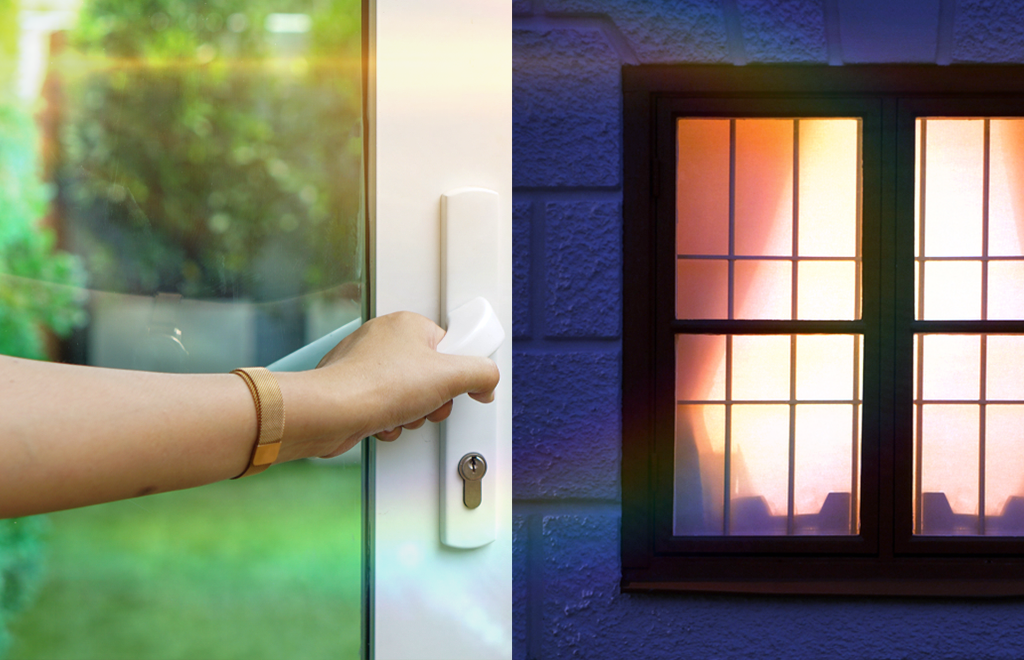Garden Makeover Guide

The UK has a long and rich history of gardening and there are many different styles of gardens throughout the country. From formal gardens to cottage gardens, there is something for everyone to enjoy. If you’re looking for inspiration for your garden makeover, then our guide could be just what you're after.
Styles of Garden
Before you start thinking about the finer details, consider the style of garden you’d like to create. Here are a selection you could choose from:
- Formal Garden
A formal garden is characterised by its symmetrical design and geometric layout. Formal gardens often feature hedges, topiary, and statues. - Cottage Garden
A cottage garden is a more informal type of garden that is typically full of flowers and herbs. Cottage gardens often have a relaxed and rustic feel. - Container Garden
A container garden is a great way to add some greenery to your home, even if you do not have a great deal of space. Container gardens are created from pots and tubs that can be placed on patios, porches, or even windowsills. - Edible Garden
An edible garden is a great way to grow your own fruits, vegetables, and herbs. Edible gardens can be as modest or as elaborate as you like and are ideal for sustainability as the produce is grown within a few feet of your backdoor. - Water Garden
A water garden is a garden where a water feature, such as a pond, lake or network of streams, is the main element of the garden itself. They feature mainly aquatic plants and can also be used to keep outdoor fish, such as koi, with the right set up in place. - Wild Garden
A wild garden is designed to attract birds, butterflies, and other wildlife. They often feature native plants and water features.
Deciding on your landscaping
Once you’ve chosen the style of garden you’d like to create, the next step is to plan the layout of your project and how to landscape it.
Soft landscaping uses plants and other natural materials to improve the look and functionality of an outdoor space. Use it to create a variety of features, such as flower beds, lawns, trees, and hedges. It creates a more private and secluded space and a buffer between your home, the street or neighbouring properties.
Hard landscaping uses solid materials in landscaping, such as concrete, brick, stone, and paving. It’s used to create a variety of features in the garden, such as paths, patios, steps, walls, and driveways. This style can also be used to create features that are both functional and decorative, such as water features, seating areas, BBQs and fire pits. Always make sure to site a fire pit, BBQ or similar well away from fences, sheds, trees or anything else flammable, and be sure to dispose of any used charcoal carefully to avoid further fires starting.

Here are some factors to consider when planning your makeover:
- The flow of traffic
The layout of your project should be designed to allow for easy flow. For example, you may want to create a path that leads from the back door to the patio, then continue to an outside building such as a summer house, with flower beds bordering each side. - The size of your space
The size of your space will affect your choices too. If you have a small garden, you may not want to split this up with paths, and might want to choose more subtle materials. - The features you want to include
The features you want to include will also affect the layout of your project. For example, if you want to include a water feature or rockery, you will need to ensure there is space for it. If you decide on a water feature then also consider the need for an electrical supply for the pump. - The needs of your family
Family and pets' needs should also be considered when deciding on your plans. For example, if you have young children, you may want to choose a non-slip paving material for your patio. For pets you may need to check none of your plant choices are poisonous if they’ll be let out unattended. If you’re considering a pond make sure this is made safe for children and pets so they can’t fall in. - The climate and sun exposure
The climate in your area will affect the type of materials and plants that are best suited for your project. Be mindful that most parts of the UK get overnight frosts in winter, so frost-proof pots are a good idea for container gardens. The amount of sun exposure your garden receives will affect the type of plants that you can grow too. For example, if your garden receives full sun, it's best to choose plants that thrive in these conditions. - The soil
The type of soil in your garden will also affect the plant types you can grow. Different plants need different types of soil to do well, so doing some research into this before you decide what to choose is a good idea. You can add certain nutrients to your soil to improve it, your local garden centre should be able to advise on this. - The style of your home
The style of your home should be considered when choosing materials for your garden. For example, if you have a traditional home, you may want to use brick or stone for your garden project to compliment your property. - The budget
A garden makeover can be an expensive project, so set a budget before you start planning as costs of both hard materials and plants could easily mount up, especially if you want to add more established plants.
If your makeover is going to include some hard landscaping it’s important to follow best practices for the materials you have chosen and to use the correct tools and equipment. Take care when working with heavy materials such as concrete, brick, and stone. If you are not comfortable doing the project yourself, you can hire a professional landscaper, if budget allows. You might also want to consider the impact on the environment, and think about using more sustainable materials that will not damage the local ecosystem or deplete natural resources. Lastly, check if you need any planning permission – for example, in some situations you’ll need to get planning permission if paving over a front garden, or for some types of garden outbuildings. Always check with your local planning office if unsure.
Tips for getting your planting right
Once any hard landscaping is done and you have your flowerbeds or containers ready, it’s time to start planting! Here are a few things to keep in mind for best results:
- Before you plant your garden, you must prepare the soil. You could add compost, manure, plant feed or other nutrients to it. Check the labels on your plants for their specific needs, or ask your local garden centre for advice.
- This might sound like very basic knowledge, but it’s easy to forget to water the plants when you have a busy lifestyle. During the warmer months it’s best to water your plants later in the evening, so the water doesn’t evaporate before it reaches the roots. Having a water butt to collect rainwater will mean using less water from the tap which could save you money on your bill and is better for the environment.
- Fertilising your plants will help them to grow healthy and strong. Fertilise your plants according to the directions on the label.
- Weeds can compete with your plants for water, nutrients, and sunlight. Weed your garden regularly to keep weeds under control.
- Pests and diseases can damage your plants. If you can, protect them with natural methods, such as companion planting and using natural barriers like sheep’s wool, around your plants as these are the kindest ways to care for them.
- When to plant should be based on the directions on the plant label, but bear in mind some plants are more susceptible to weather conditions than others. You may need to protect some from any spring frosts if planted earlier in the year.
- Mulch is organic material which can be made from garden compost, wood chippings, or leaf mould that you spread around your plants. Mulch helps to retain moisture and suppress weeds.
- Deadhead (remove flowers from plants when fading or dead) your plants. Deadheading removes spent blooms and encourages new growth.
- Protect your plants from pests and diseases. Keep an eye out for any issues and treat them promptly if you see any signs of infestation.
We hope our guide has helped inspire you to plan your garden makeover. Check your Home Insurance policy to see whether you have cover – esure provides garden contents cover up to £2,000 including fire, theft and lightning but not for storm or flood damage – please check your policy wording for full details.
You might also be interested in
Top tips for summer security
Whether home or away, make sure your home's kept safe this summer
Understanding your home cover and when it applies
Take a look at our tips & keep your home covered.

